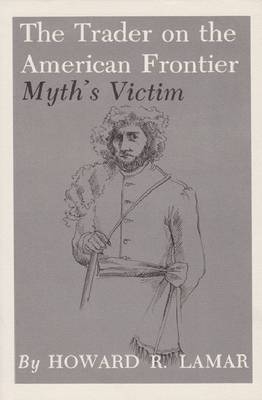
Trader On The American Frontier-Myth'S Victim
Seiten
1977
Texas A & M University Press (Verlag)
978-0-89096-033-2 (ISBN)
Texas A & M University Press (Verlag)
978-0-89096-033-2 (ISBN)
Like the cowboy, the frontier trader has been so wrapped in myth that our understanding of who he was and what he did is largely shaped by stereotype: the Indian trader, for example - gunrunner, trader in slaves, and corrupter of the noble red man - or the mountain man, variously seen as romantic wilderness hero or degenerate white savage.
Examining these and other myths, Lamar shows that early trade was, on the contrary, one of the first and most successful ways red men and white communicated, that traders were not snakes in America's western Eden but participants in a vigorous if exploitative trade system already in existence for generations, and already in existence for generations, and that until the Rocky Mountain fur trade bypassed the Indian, tribal ways deteriorated little and both Indian and trader found their "twilight civilization" an attractive, profitable - and exciting - way of life.
The trader had to know and tolerate two worlds whereas the farmer who came after had no need of the Indian. His life meant adventure, often danger, but the trader, a hunter with strong mercantile instincts played a larger role than myth allows. As Lamar makes clear, his transition from lone scavenger to merchant-developer represents in microcosm the history of the frontier.
This essay was originally presented in April 1976 at Texas A&M University as part of a symposium, "The American Frontier Reexamined," one of several Centennial Academic Assemblies held in honor of the university's hundredth year.
Examining these and other myths, Lamar shows that early trade was, on the contrary, one of the first and most successful ways red men and white communicated, that traders were not snakes in America's western Eden but participants in a vigorous if exploitative trade system already in existence for generations, and already in existence for generations, and that until the Rocky Mountain fur trade bypassed the Indian, tribal ways deteriorated little and both Indian and trader found their "twilight civilization" an attractive, profitable - and exciting - way of life.
The trader had to know and tolerate two worlds whereas the farmer who came after had no need of the Indian. His life meant adventure, often danger, but the trader, a hunter with strong mercantile instincts played a larger role than myth allows. As Lamar makes clear, his transition from lone scavenger to merchant-developer represents in microcosm the history of the frontier.
This essay was originally presented in April 1976 at Texas A&M University as part of a symposium, "The American Frontier Reexamined," one of several Centennial Academic Assemblies held in honor of the university's hundredth year.
William Robertson Coe Professor of American History at Yale University HOWARD R. LAMAR has received several fellowships for his studies of the American frontier. His books include The Dakota Territory; The Far Southwest, 1846-1912; and The Cruise of the Portsmouth.
| Erscheint lt. Verlag | 30.6.1977 |
|---|---|
| Zusatzinfo | Illustrations, unspecified |
| Verlagsort | College Station |
| Sprache | englisch |
| Themenwelt | Geisteswissenschaften ► Geschichte ► Regional- / Ländergeschichte |
| Wirtschaft ► Volkswirtschaftslehre ► Mikroökonomie | |
| ISBN-10 | 0-89096-033-X / 089096033X |
| ISBN-13 | 978-0-89096-033-2 / 9780890960332 |
| Zustand | Neuware |
| Haben Sie eine Frage zum Produkt? |
Mehr entdecken
aus dem Bereich
aus dem Bereich
Erinnerungen
Buch | Softcover (2024)
Pantheon (Verlag)
16,00 €


